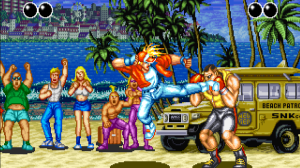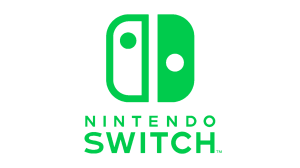It can be difficult to carve out your own path in the world of roleplaying games, but Chronos: Before the Ashes manages to find its own voice through a mixture of atmosphere, tension, and mystery. There’s a sense of isolation throughout the game that heightens these elements, and the central gameplay loop of aging every time you die and the changing characteristics of your hero and their evolving abilities with each death rewards the patient and thoughtful player, elements which are all wrapped up in a story that, while sparse at times, does still manage to pull the player forward. For all of its successes, though, there are a number of things holding it back from greatness.
Videos by ComicBook.com
Chronos puts you in the role of a hero looking to save their homeland from an ancient evil, and the game kicks off with a compelling introduction to the storytelling style and tone of this world. It’s a rather depressing place you start out in, an out-of-commission facility on a rain-soaked day, though you’ll soon end up in a fantasy world that does bring some welcome color and liveliness to your adventure. That’s where the game really begins, and you’ll soon be on your way to take on the Dragon, fighting enemies and solving puzzles until you get to your destination.

The most unique mechanic is in your hero’s aging, as every time you die you will age one year. You start off swift and able to tackle anything, but as you age, you will also start to see some abilities lessen while others grow in power. This isn’t really an issue for a while, as I died several times early on, resulting in turning around and noticing I had somehow aged 10 years rather quickly. When you hit certain milestones, you will also unlock a new perk for your character, upgrading their strength or vitality, for instance. The older you become, though, the more certain skills diminish, yet your abilities in the arcane will strengthen over time.
The aging mechanic brings a welcome sense of tension and energy to each encounter, as even lower-tier enemies can get a hit in at just the right time to kill you, especially since your healing is so limited. You can either use one of the several Dragon Hearts you find along the way or wait until you level up, which completely heals you. You can only use Dragon Hearts once per life, however, so if you’ve collected three, you can heal yourself three times until you die again. That’s why you’ll want to use the block button and grab Shields when you come upon them, and picking the right weapon for the battle at hand is paramount to achieving victory, with patience really being your strongest ally.

During your time exploring and moving towards your main goal, you’ll be mostly fighting, with battles broken up by puzzles you’ll need to solve to move forward, of course, but much of the game is steeped in combat. Watching for your opportunity to strike and using your attacks wisely gives each battle an added edge, but it also highlights some of the combat’s main issues. Combat never truly feels smooth, and despite your best efforts, you’ll likely take a few precious hits to your life bar, not because of skill, but because of the sometimes clunky mechanics. Countering never felt quite right, and while blocking and general strikes are fine for the most part, it always feels like you’re working against the game as opposed to learning to harness the tools it presents you.
This is especially true of bigger and tougher foes, which require some advanced tactics of evasion. These fights often take place in smaller spaces, so evading is key, but the core evade is really only great for avoiding one specific attack, not creating space. You’ll also need to lock on to your enemy if you don’t want the camera to get wonky at times, but doing so doesn’t let you run away. Instead, you’ll slowly back away, which, when in the heat of battle and low on health, is not what you need. You’ll need to remove the lock-on, take a second for the character to set, and then run away, but then the prolonged animation to drink from the Dragon Heart ampule kicks in, and I’m sure I’m not the only one who died many a time just before their health was restored, as you are a sitting duck.

Now, some people will love that additional challenge, and I don’t even mind that challenge, but if you’re going to introduce it, the other mechanics need to work in a fluid and seamless manner, and that just isn’t the case here.
The boss fights can be the most frustrating in this regard, but then they are also home to some of the coolest enemy designs and the game could have used more of them. While the looks of certain enemy types may change, many of them just don’t make much of an impression from a visual standpoint. In fact, the world itself has stellar moments that showcase its unique beauty, but overall, many of the areas start to blend into one another and don’t feel as vibrant as they could feel, and they certainly don’t feel alive, as, aside from enemies and the occasional NPC, you don’t see a soul here.
What is fantastic is the transition between these various areas in the labyrinth, as jumping from one to the next is tied to solving a puzzle and often results in a creative transition, like walking through a tapestry or literally shrinking in size and questing through a cabinet to recover a key you need to progress. One sequence even has you opening up a portal and then having an enemy jump out at you, and there were actually several moments that managed to shock me like that throughout the game.
While the characters you meet are few and far between, the voice acting is stellar throughout, I just wish there was more of it. Most of the lore-building here is done through books you find throughout, but hearing the voice acting, especially towards the end of the game, makes you wish there was more, yet that doesn’t keep the ending from hitting with impact.

There’s a lot to like about Chronos: Before the Ashes and there were moments where I was fully enveloped in the mystery of this world and the combat, which does offer a sense of accomplishment once you figure out the most efficient way to take down an enemy. The narrative parts of the game were incredibly strong and the uniqueness of the aging concept and its impact on your hero is definitely a feather in its cap. Unfortunately, the core combat isn’t something I necessarily enjoyed on a moment-to-moment basis, and the sparseness of story elements and character interactions hold it back and keep you from becoming completely immersed in your adventure. With some smoothing of the edges and more of a narrative presence, this could be a knockout, and here’s hoping we get another chance to see that happen.
Rating: 3 out of 5
Chronos: Before the Ashes is available for PS4, Xbox One, Nintendo Switch, PC, and Stadia now. Review code was provided by Gunfire Games for PS4.








